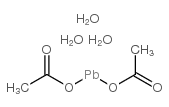Oxidative stress: a possible mechanism for lead-induced apoptosis and nephrotoxicity.
Qinghua Jia, Xiaoqin Ha, Zhihua Yang, Lin Hui, Xiaopeng Yang
Index: Toxicol. Mech. Methods 22(9) , 705-10, (2012)
Full Text: HTML
Abstract
Lead-induced nephrotoxicity is a human health hazard problem. In this study, Human mesangial cells (HMCs) were treated with different concentration of lead acetate (5, 10, 20 μmol/l) in order to investigate the oxidative stress and apoptotic changes. It was revealed that lead acetate could induce a progressive loss in HMCs viability together with a significant increase in the number of apoptotic cells using 3-(4,5-dimethyl-2-thiazolyl)-2,5-diphenyl tetrazolium (MTT) assay and flow cytometry, respectively. The apoptotic morphological changes induced by lead exposure in HMCs were demonstrated by PI-Hochest33342 staining. A DNA laddering pattern in lead-treated cells was shown, which could indicate nuclear fragmentation. In addition, lead acetate significantly increased the levels of malondialehyde (MDA) content and lactate dehydrogenase (LDH) activity. Therefore, it might be concluded that lead could promote HMCs' oxidative stress and apoptosis, which may be the chief mechanisms of lead-induced nephrotoxicity.
Related Compounds
| Structure | Name/CAS No. | Molecular Formula | Articles |
|---|---|---|---|
 |
lead diacetate trihydrate
CAS:6080-56-4 |
C4H12O7Pb |
|
Preventive efficacy of bulk and nanocurcumin against lead-in...
2013-04-01 [Biol. Trace Elem. Res. 152(1) , 31-40, (2013)] |
|
Plasmacatalytic removal of lead acetate assisted by precipit...
2014-07-01 [Chemosphere 107 , 304-10, (2014)] |
|
Nephroprotective effect of calcium channel blockers against ...
2013-04-26 [Toxicol. Lett. 218(3) , 273-80, (2013)] |
|
Lactobacillus plantarum CCFM8661 alleviates lead toxicity in...
2012-12-01 [Biol. Trace Elem. Res. 150(1-3) , 264-71, (2012)] |
|
Involvement of CTR1 and ATP7A in lead (Pb)-induced copper (C...
2014-02-10 [Toxicol. Lett. 225(1) , 110-8, (2014)] |